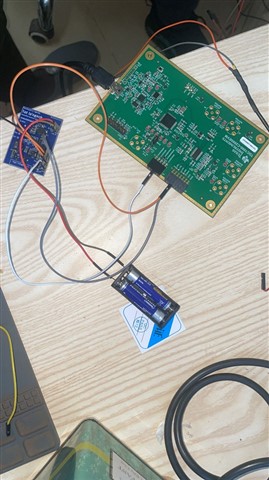Tool/software:
Hello.
This was our previous thread (here), we appreciate the responses given.
We have made significant progress in our application. We tested the EVM with plastic bottles and 3mm thick steel metals and we were able to get accurate results.
We tested the EVM with an LPG cylinder and the signals were not able to penetrate it.
We developed an HV board based on the reference given (here) to boost the voltage and although the HV TX pin indicated the 30 V as expected (shown in the scope image), we were unable to receive the echo pulse.
With the GUI, we enabled the TDC1000-HV Driver EN1 after connecting the EVM to the HV circuit board.
With the same GUI settings, we receive an echo signal without the HV circuit board, but we don't receive it when use the HV circuit.
Do you have any advice on what to do to receive the echo signal?









